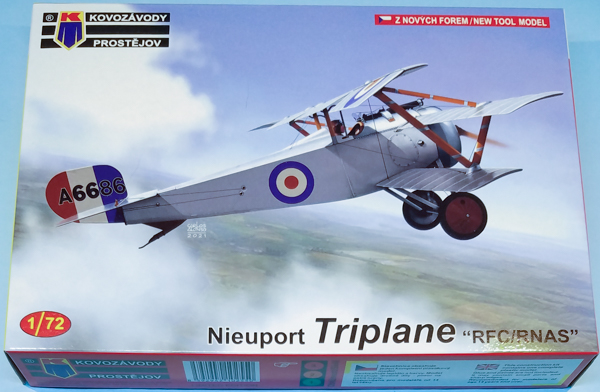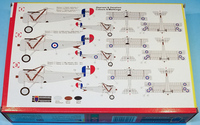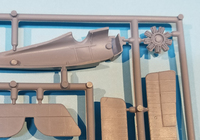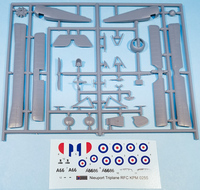
Kovozávody Prostějov 1/72 Nieuport Triplane "RFC/RNAS"
By Matt Bittner
Introduction
During World War I, there was the thinking that with more wings meant better manuverability so countries started to experiment with triplanes and with one country - Britain - even a quadruplane. The two countries that were most successful with triplanes were Britain and Germany but even so, even France experimented with the idea - and found it wanting.
The first Triplane Nieuport produced was one based on their Nieuport 10. Then they created another based on the Nieuport 17, which is depicted with this kit. France didn't care for it, but Britain decided to use it for a short time, hence being flown more often in their hands (but I don't think in battle). Finally a third was created based on the Nieuport 17bis.
An older kit that came out of this plane was put out by RVHP quite some time ago.
The Kit
The Kovozávody Prostějov (KP) 1/72 Nieuport Triplane "RFC/RNAS" kit consists of 32 pieces of gray injected plastic with decals for the triplane evaluated by the British (which was the same airframe, just marked differently in its life):
- Tested by No. 11 (Naval) Squadron, RNAS, 1917
- Late Marking, A6686, RNAS, 1917
- French serial N1388, tested by RFC, 1917

|
The third option is how the aircraft looked when the French gave it to the British. The first option - that has an incomplete RNAS serial on the rudder - is the second marking on its timeline. The third option was in its final form. All aircraft were finished overall in aluminum dope with a natural metal cowling. The decals appear to be in register. What's kind of amusing is KP provides oil "streaking" on the fuselage sides in the form of decals.
Construction naturally starts with the cockpit and there isn't much to it. KP provides a floor, control stick, rudder pedals, seat-mount and seat, along with an instrument panel (but no instrument decals - in fact, there are no seat belts, decal or otherwise, provided as well). The molded-on cockpit side detail is very spartan and would be best enhanced with something like the Tom's Modelworks French Interior photoetch set.

|
Once the cockpit and instrument panel are painted and assembled, they're then added to one fuselage half and the fuselage halves glued together. Now the insructions have you add the lower wing, stabilizer and rudder. Since I plan on painting the rudder (as I'm finishing mine as the French machine) I'll leave that off until the end.
The next construction steps have you add the middle wing followed by the engine and cowl. Since the cowl should be left natural - and not doped aluminum - it would be best painted off the model and added later. The kit's engine is very soft in detail and best replaced with a Le Rhone 9J from a different producer like Small Stuff, now unfortunately out of stock.
Now the upper wing and all wing struts are attached to the model, again, I would wait until after painting and decaling for this step. Note that the RFC/RNAS version had a different top wing than the French version. In addition, the guns were different with the British version using a Vickers and the French using a Lewis. Both wings and guns are catered for in the kit so pay attention to this step of the instructions for the version you're building.

|
The last step of the instructions has you add the landing gear, tail skid, horizontal tail struts, and prop and coné de pénétration (it is not a spinner).
Finally KP does include rigging drawings, but I feel they don't show where all the rigging goes. Your best bet is to track down the best reference on the type, which is Windsock International magazine, Volume 7, Numer 2, March/April 1991.
Conclusion
This is a very interesting type to be made as an injected plastic kit. Granted, you'll get no complaints from me since I am very interested in the French version of this plane. But still, with only two airframes built it's unusual to have made into an plastic injected kit.
I definitely thank Kovozávody Prostějov for sending this kit to review. It will be a fun build.
